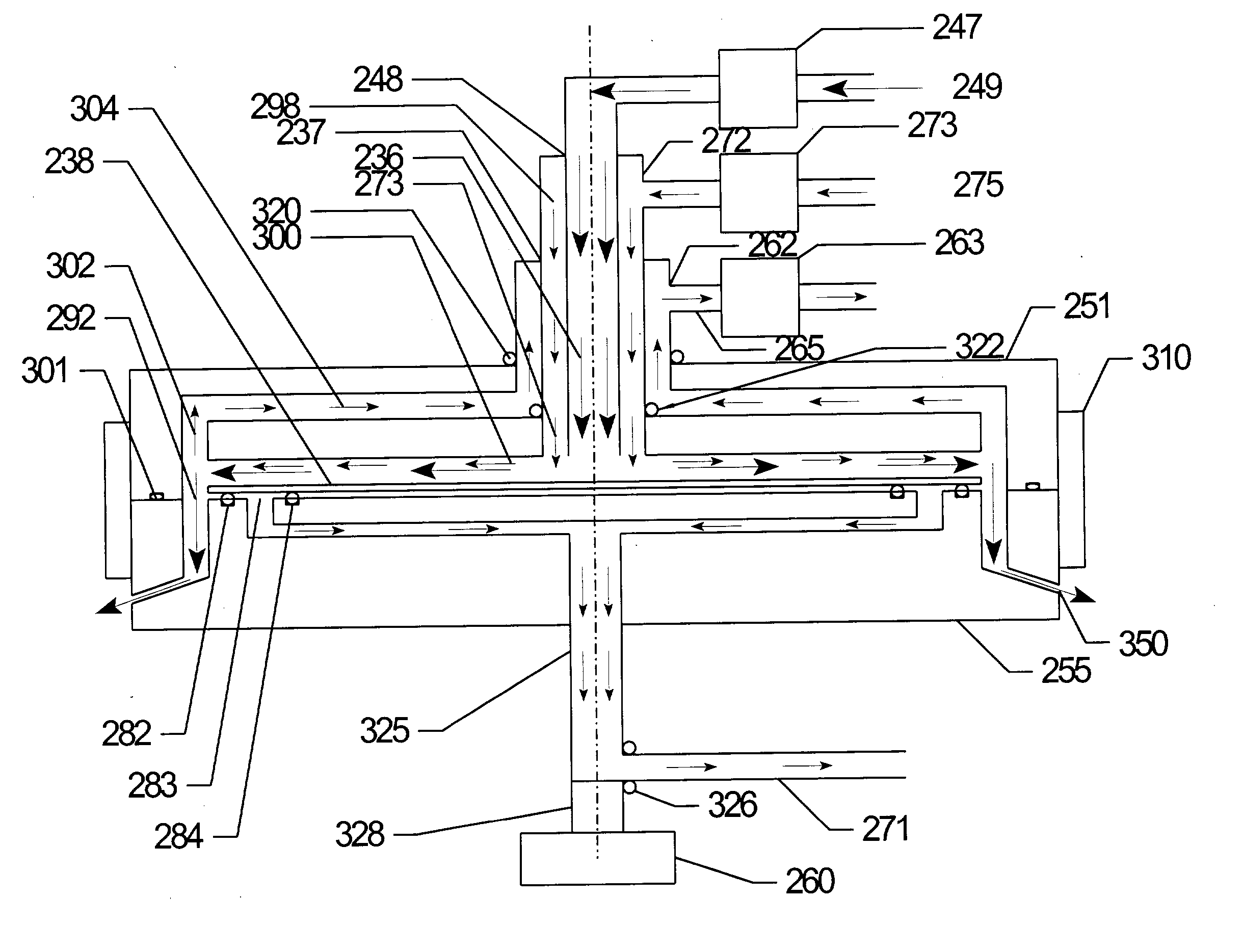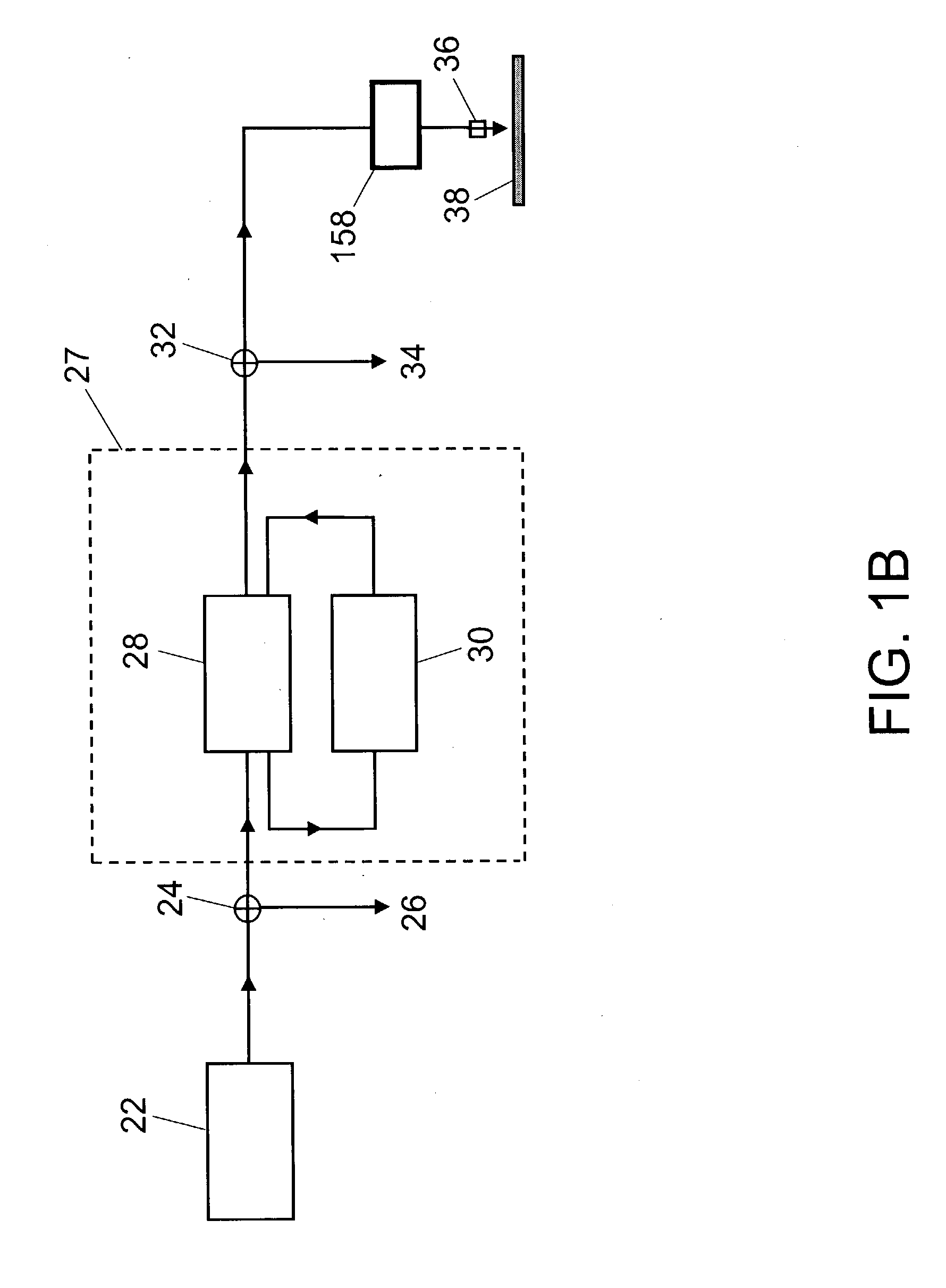Method and apparatus for treating a substrate with an ozone-solvent solution III
a technology substrate, which is applied in the direction of photomechanical equipment, instruments, cleaning using liquids, etc., can solve the problems of insufficient time for the supersaturated solution to return to equilibrium, and the dispense temperature of ozone water solution decreased about 5 degree c, so as to improve the removal rate and reduce the corrosion potential , the effect of reducing the process temperatur
- Summary
- Abstract
- Description
- Claims
- Application Information
AI Technical Summary
Benefits of technology
Problems solved by technology
Method used
Image
Examples
case 1a
[0099] 2. We can estimate the magnitude of back pressure for minimizing the loss of ozone gas from the heated solution. Let us consider some examples. [0100] Case 1. Ozone-solvent solution initially formed by dissolving ozone gas to full saturation concentration (using a recirculating contactor for example): If an ozone-solvent solution is first formed by dissolving in a solvent at temperature T1, ozone gas at a concentration Cg1 and absolute pressure p1, where the saturation dissolved ozone concentration C in the solvent is determined by Henry's law from Cg1, T1, and P1. For example, if Cg1=240 mg / L, and T1=10 degree C., and P1=1 bar, then the dissolved ozone concentration at saturation is approximately 85 mg / liter. (See Table 1.) The rate of transport of ozone gas into solution is equal to (Csat−C)Ai / D where C is the dissolved concentration at a given time t, Csat is the saturation concentration as determined by Henry's law, D is Diffusion constant for ozone gas in the solvent, an...
case 2a
[0104] In this example we have assumed conditions in which the single pass contactor produces an concentration at the outlet of 70 mg / L which is the same as that which is achieved by the recirculating contactor dissolving ozone to saturation at the same temperature. This is to illustrate the use of a pressurized contactor to quickly achieve a concentration at 10 degree C. that is equal to the equilibrium saturation concentration at 10 degree C. In general, a single-pass pressurized contactor operating at a pressure P>1 bar and temperatureT=T1 can produce a continuous flow of an ozone-water solution at a concentration C which may be less than, equal to, or greater than the equilibrium saturation concentration at P=1 bar and T=T1 depending upon the design of the contactor and the contactor residence time. [0105] If the ozone solvent solution formed above under case 2 is heated to a temperature T2, and the back pressure P3 is set to 1 bar, then new dissolved ozone concentration is det...
PUM
| Property | Measurement | Unit |
|---|---|---|
| concentration | aaaaa | aaaaa |
| etch rate | aaaaa | aaaaa |
| etch rate | aaaaa | aaaaa |
Abstract
Description
Claims
Application Information
 Login to View More
Login to View More - R&D
- Intellectual Property
- Life Sciences
- Materials
- Tech Scout
- Unparalleled Data Quality
- Higher Quality Content
- 60% Fewer Hallucinations
Browse by: Latest US Patents, China's latest patents, Technical Efficacy Thesaurus, Application Domain, Technology Topic, Popular Technical Reports.
© 2025 PatSnap. All rights reserved.Legal|Privacy policy|Modern Slavery Act Transparency Statement|Sitemap|About US| Contact US: help@patsnap.com



